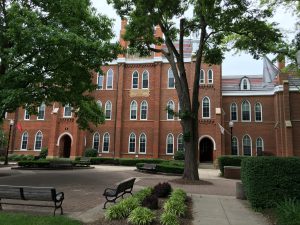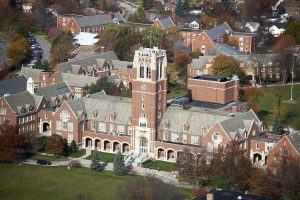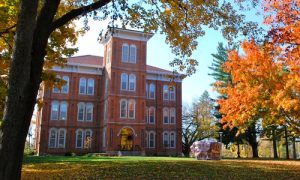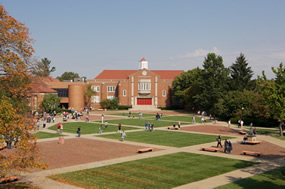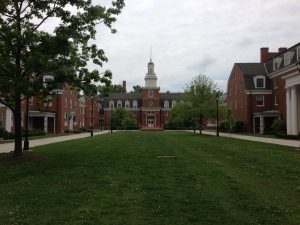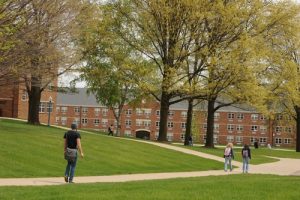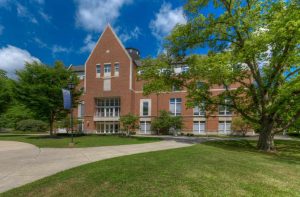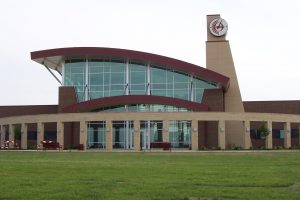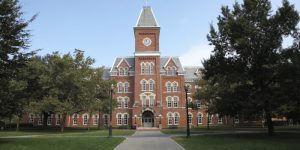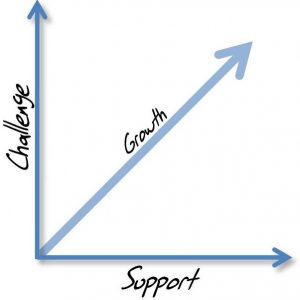
In 1968 Nevitt Sanford published the book, “Where Colleges Fail: A study of Student and Person.” His work was the launching point of a conceptual model that I have long relied upon in thinking about how students transition, grow, and develop while in college. In today’s blog, I want to explain the model and describe how it can be used to help you and your student.
Simply put, Sanford argued that students (and everyone else incidentally) grow and develop when there is some balance between the challenges we face in our life and the supports we draw upon to help us manage them. If the challenges outweigh the supports, we may feel stressed and overwhelmed leading to burnout or shutdown. If supports outweigh challenges, we may feel comfortable but not stretched. On the other hand, if we face challenges outside of our comfort zone, and receive sufficient and helpful support, we are more likely to grow, develop, and expand our capacities and capabilities. Of course this is our goal, so there may be appropriate times to seek support and others to seek challenge.
A couple of observations: First, transitional points in our lives such as losing a job, ending an important relationship, making a geographic move, or…..going away to college tend to be naturally fraught with high levels of challenge. These key touchstone turning points in our lives may lead us into a sense of a loss of control and feelings of uncertainty or even outright panic. In kids, we may call it “homesick;” in adolescents we may call it, “acting out;” and in adults it has been called a, “nervous breakdown.” You get the idea.
Second, while transitional challenges are strikingly evident as they occur, supports often need to be acquired or sought out intentionally.
Finally, navigating these high challenge, transitional times of our lives always takes time. A wise friend of mine used to say, “fake it until you make it.” I think he was talking about the lag between being jettisoned from our comfortable life as knew it into a period of transition and the point when we actually become acclimated to our new circumstances, happy, and capable in terms of the challenges it presents. It just takes time. However, in addition to time, the ability to seek helpful support as needed can make all the difference.
For the student transitioning to college, the most important question relates to how to intentionally seek healthy support until he or she feels “at home” again. In prior blogs I have identified a number of immersive experiences a student can engage in college in order to develop new authentic and supportive relationships (e.g. student organization leadership, social fraternity or sorority membership, participation in athletics, band, theatre, or others) while connecting to their new college. Students can also utilize campus resources by visiting with a counselor, faculty member, or student services staff. Periodic trips home, hosting friends from high school in their dorm, and engaging activities they enjoy can play a role as well.
In terms of your student’s transition to college, you can coach your student on navigating this natural but often challenging process. Normalize it for them – we all go through these times. Assess what you think might be helpful to them. Suggest how they might acquire additional support. Make sure they understand that it will take time – there is no quick answer. Of course, you cannot solve this for them – they must solve it for themselves…with support from others. Welcome to the human condition and thanks for hiking with us today.
Next week I will post our most recent newsletter in lieu of a blog entry. That sets the stage for the lead up to Halloween and the beginning of our series of ghost stories from Ohio’s colleges. Don’t miss it.
About the Author: After touring 60 of the best colleges in Ohio, Dr. Jay, a prior faculty member and dean, founded College Bound Advantage (CBA) – a Columbus, Ohio college consulting firm. CBA specializes in helping families optimize college selection around 18 “fit factors” and helping students clarify co-curricular and major options while exploring colleges that specialize in them. College Bound Advantage serves all of Ohio including Cleveland, Akron, and Cincinnati metro areas. Check us out at www.collegeboundadvantage.com .









